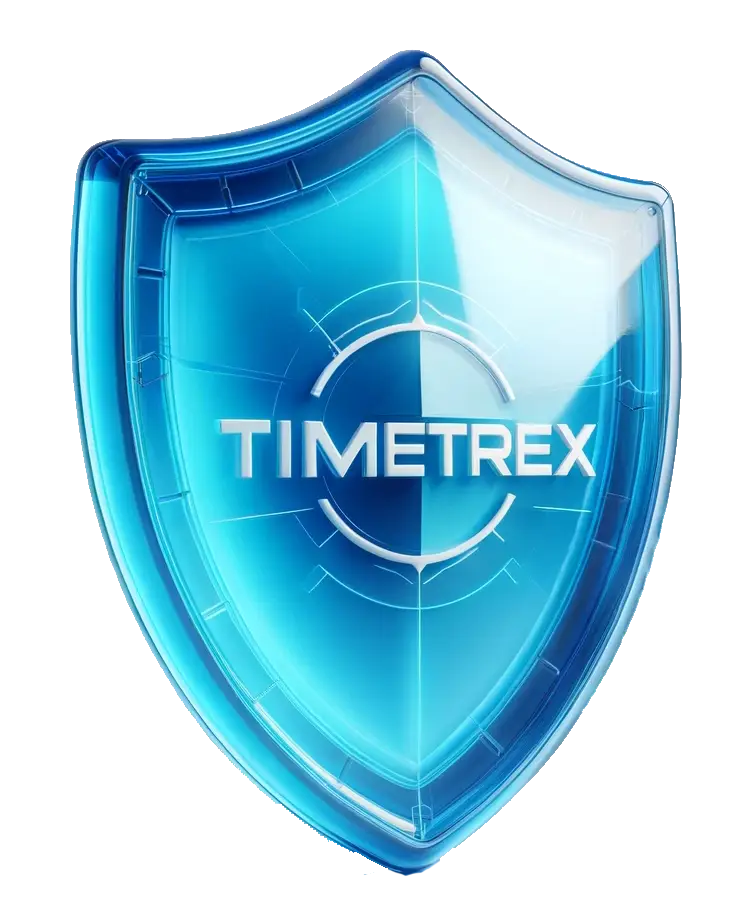Easy Guide To Geo-Fencing

What is Geofencing?
Geo-fencing is a dynamic technology that allows for the creation of virtual boundaries around a specific real-world geographical area, leveraging advanced location-based services such as GPS, RFID, Wi-Fi, and cellular data. When a mobile device crosses these invisible borders, it triggers predefined actions, ranging from sending targeted notifications and alerts to tracking movement and automating changes in device settings. This technology offers an innovative way to interact with physical spaces, enabling businesses and individuals to establish automated, location-triggered interactions. Geo-fencing’s applications span various domains, including marketing, security, logistics, and smart home automation, making it an integral tool in the modern digital landscape. It not only enhances operational efficiency and security but also provides personalized experiences, revolutionizing how we engage with our surroundings.
Understanding of Geo-Fencing
Geo-fencing technology represents a pivotal innovation in the realm of digital interaction with physical spaces. At its core, it enables the creation of virtual perimeters—invisible boundaries that encircle specific real-world geographical areas. This is achieved through the integration of location-based services such as GPS (Global Positioning System), RFID (Radio Frequency Identification), Wi-Fi, and cellular data technologies. These technologies work in tandem to accurately determine the geographical location of a device relative to the predefined geo-fenced area.
When a mobile device, equipped with the necessary software or application, enters or exits these geo-fenced zones, it triggers an array of predefined actions. These actions are highly customizable, depending on the objectives of the geo-fencing application. They can be as straightforward as sending push notifications to a user’s smartphone, alerting them of proximity to a particular location, such as a retail store with ongoing promotions. Alternatively, more complex applications can track the movement of devices or assets in real-time, providing valuable data for logistics and fleet management. Furthermore, geo-fencing can be employed to automate the adjustment of device settings, exemplifying its use in smart home applications where lights, heating, or security systems are activated or deactivated based on the user’s location.
The process of setting up a geo-fence involves defining the geographical boundaries of interest using geo-fencing software. This can be a circle with a certain radius around a point, or a more complex shape that closely follows the contours of a specific geographic area. Once established, these virtual barriers are monitored by the geo-fencing system, which continuously checks the location of the devices against the defined boundaries.
The underlying technology of geo-fencing is sophisticated, relying on real-time data to function effectively. GPS-enabled devices communicate with satellites to determine their precise location on the globe, offering accuracy and reliability for outdoor geo-fencing applications. In contrast, RFID employs electromagnetic fields to automatically identify and track tags attached to objects, making it suitable for both indoor and outdoor tracking but requiring proximity to readers. Wi-Fi and cellular data offer additional layers of location determination, leveraging the ubiquity of wireless networks and cell towers to estimate a device’s position, especially in urban environments where GPS signals may be less reliable.
Understanding geo-fencing’s operational mechanism is just the beginning. Its true power lies in its versatility and the breadth of its applications. From marketing and security to logistics and personal convenience, geo-fencing technology is reshaping the way we interact with the spaces around us, making our experiences more connected, automated, and personalized. As we delve further into its applications and benefits, the transformative potential of geo-fencing in enhancing operational efficiencies, security measures, and user experiences becomes increasingly apparent, marking it as a cornerstone technology in the digital age.


How Does Geo-Fencing Work?
The magic behind geo-fencing lies in its ability to seamlessly integrate the virtual world with our physical surroundings through sophisticated technology. The first step in deploying geo-fencing is to meticulously define the geographical boundaries of interest. This is achieved using specialized geo-fencing software, where users can draw virtual perimeters around a designated real-world area. These boundaries can be as simple as a circle with a specific radius around a point of interest or as complex as polygons that accurately map out irregular shapes to cover precise locations.
Once these virtual boundaries are established, the geo-fencing system springs into action, monitoring the location of devices that enter or exit the defined area. This is where the convergence of various location-based technologies—GPS, RFID, Wi-Fi, and cellular data—plays a crucial role. Devices equipped with the corresponding app or software communicate their location in real-time through one or more of these technologies. GPS, for instance, provides pinpoint accuracy by connecting with satellites to determine outdoor locations, while RFID uses electromagnetic fields for close-range identification and tracking of tags attached to objects. Similarly, Wi-Fi and cellular data contribute to location detection, especially in environments where GPS signals may be weaker, such as urban settings or indoors.
When a device crosses into or out of a geo-fenced zone, the system detects this movement and triggers a predefined response. This response is highly customizable based on the application’s needs and user settings. It can range from sending instant notifications to a user’s smartphone, alerting them of nearby offers or critical information, to more complex actions like tracking the movement of assets for logistics purposes. In the realm of smart home technology, geo-fencing can even automate tasks, such as adjusting thermostats or turning lights on or off, based on the homeowner’s proximity to their residence.
The operational backbone of geo-fencing is its real-time responsiveness and the accuracy of location data. It relies on continuous communication between the device and the geo-fencing system to ensure that actions are triggered precisely when a boundary is crossed. This involves sophisticated algorithms and data processing to interpret location data accurately and initiate the appropriate response swiftly.
In essence, geo-fencing creates a bridge between the digital and physical worlds, allowing for an array of automated, location-based interactions that enhance security, efficiency, and personalization. Its versatility and the ability to trigger specific actions based on geographical location make geo-fencing a powerful tool in various applications, from marketing strategies and security enhancements to optimizing logistics and enriching personal convenience.
Applications of Geo-Fencing
Geo-fencing technology boasts a wide array of applications across numerous sectors, demonstrating its versatility and utility in today’s connected world. By creating virtual perimeters around specific geographical areas, geo-fencing enables automated, location-triggered actions that can enhance operational efficiency, security, marketing strategies, and even personal convenience. Below are some of the key applications of geo-fencing across different industries:
Time and Attendance
In the realm of human resources and workforce management, geo-fencing simplifies time tracking and attendance processes. By establishing geo-fences around workplace premises, businesses can enable employees to automatically clock in and clock out as they enter or leave the work site. This application not only streamlines attendance tracking but also ensures accuracy in payroll processing and enhances compliance with labor regulations.
Marketing and Retail
Geo-fencing has revolutionized the marketing and retail sectors by enabling hyper-targeted promotional strategies. Retailers can set up geo-fences around their stores or even competitors’ locations to send timely offers and alerts to customers’ smartphones as they approach the area. This targeted approach boosts customer engagement, drives foot traffic to brick-and-mortar stores, and enhances the effectiveness of marketing campaigns.
Security
In the security domain, geo-fencing acts as a digital guardian, monitoring and managing access to secure areas. It can alert security personnel when unauthorized individuals enter or leave a designated secure zone, such as corporate campuses, restricted areas within airports, or private properties. This application not only bolsters security measures but also aids in real-time incident response and management.
Fleet Management
Geo-fencing is a game-changer for the logistics and transportation sectors, particularly in fleet management. By establishing geo-fences around operational zones, depots, or customer locations, businesses can monitor vehicle movements, ensuring that they stay within designated areas. This capability facilitates efficient route planning, reduces unauthorized use of vehicles, and enhances the overall management of fleet operations.
Smart Home Automation
In the consumer domain, geo-fencing finds a place in smart home automation, offering a seamless way to enhance living comfort and energy efficiency. Homeowners can set up geo-fences around their property so that smart home systems adjust settings like temperature, lighting, and security systems based on their proximity to home. For instance, lights can turn on automatically as residents approach their house, or the thermostat can adjust to a more comfortable temperature, ensuring a warm welcome home.

Geo-Fencing and Buddy Punching
Geo-fencing technology has significantly advanced the management of time and attendance, streamlining the process with precision and efficiency. By integrating geo-fencing into time and attendance systems, businesses can automate employee clock-ins and clock-outs based on their location, thereby enhancing accuracy and reducing time theft. This section delves into how geo-fencing is revolutionizing timekeeping practices and offers a solution to the pervasive issue of buddy punching.
Understanding Geo-Fencing in Time and Attendance
Geo-fencing utilizes GPS, RFID, Wi-Fi, or cellular data to create virtual perimeters around a predefined geographical area, such as a workplace. When employees with enabled devices enter or exit this area, the geo-fencing system automatically records their clock-in and clock-out times. This method not only simplifies the attendance tracking process but also ensures that time records are tied to the physical presence of employees at the work site.
The implementation of geo-fencing for time and attendance purposes offers several benefits:
- Accuracy and Efficiency: Automates the tracking of employee work hours, minimizing manual entry errors and reducing administrative overhead.
- Flexibility: Supports remote work and off-site assignments by allowing businesses to set up geo-fences at various locations, accommodating the modern, flexible workforce.
- Compliance: Helps ensure compliance with labor laws by accurately recording work hours, breaks, and overtime.
Combating Buddy Punching with Geo-Fencing
Buddy punching, the practice of one employee clocking in or out for another, is a form of time theft that can lead to inaccurate payroll and inflated labor costs. Geo-fencing offers an effective solution to this issue by tying time records to the geographical location of an individual employee’s device. This capability significantly reduces the opportunity for buddy punching, as employees must be physically present within the geo-fenced area to record their attendance.
Implementing Geo-Fencing for Time and Attendance
To leverage geo-fencing effectively, businesses should consider the following steps:
- Choose the Right Software: Select a time and attendance system that supports geo-fencing and is compatible with the company’s operational needs and employee devices.
- Define Geo-Fenced Areas: Establish virtual perimeters around the workplace or specific job sites. Precision in defining these areas ensures that the system accurately captures employee movements in relation to the geo-fence.
- Educate Employees: Provide clear communication and training to employees about how geo-fencing works, its benefits, and privacy considerations. Transparency is key to gaining employee buy-in.
- Monitor and Adjust: Regularly review geo-fencing settings and attendance data to adjust boundaries as needed and address any issues that arise.
Privacy Considerations
While implementing geo-fencing for time and attendance offers numerous advantages, it also raises privacy concerns. It is crucial for businesses to establish clear policies regarding data collection, usage, and storage. Employees should be informed about what data is being collected and how it will be used, ensuring that geo-fencing is strictly applied for attendance purposes and not for invasive monitoring.
Benefits of Geo-Fencing
Geo-fencing technology has emerged as a powerful tool across various industries, offering a multitude of benefits that streamline operations, enhance security, and create personalized experiences. By utilizing virtual perimeters around specific geographical areas, businesses and individuals can leverage geo-fencing for a wide range of applications. Here, we explore the key benefits of incorporating geo-fencing into operational, marketing, and security strategies.
Enhanced Security
Geo-fencing significantly bolsters security measures for businesses and personal properties. By setting up virtual boundaries around sensitive or secure areas, organizations can receive real-time alerts when these perimeters are breached. This immediate notification system is invaluable for preventing unauthorized access, monitoring activity around critical infrastructure, and ensuring the safety of assets and individuals. In residential settings, geo-fencing can alert homeowners to unexpected movements around their property, adding an extra layer of security.
Operational Efficiency
In logistics and fleet management, geo-fencing offers substantial improvements in operational efficiency. By creating geo-fences around warehouses, delivery areas, or routes, companies can monitor and manage the movement of vehicles and assets in real-time. This capability ensures that resources are allocated and utilized efficiently, reducing idle times, optimizing routes, and enhancing the overall management of operations. Geo-fencing also supports compliance with regulatory requirements by ensuring vehicles operate within designated zones, contributing to safer and more efficient fleet operations.
Personalization
Geo-fencing technology allows for the customization of experiences in mobile apps and services, significantly enhancing user engagement. By understanding a user’s location in relation to specific geographical areas, apps can tailor content, notifications, and features to align with the user’s current context and preferences. This level of personalization not only improves the user experience but also strengthens brand loyalty and satisfaction. Whether it’s recommending nearby restaurants, adjusting a smart home device as a user approaches their house, or providing location-based reminders, geo-fencing personalizes interactions in a way that is both meaningful and valuable to the user.

TimeTrex and Geo-Fencing
TimeTrex, a leader in workforce management solutions, harnesses the power of geo-fencing technology to bring about a transformative approach to managing employee time and attendance, scheduling, and labor tracking. By integrating geo-fencing capabilities into its comprehensive suite of tools, TimeTrex offers businesses a modern, efficient, and secure method to enhance their workforce management practices. This section explores how TimeTrex leverages geo-fencing technology to streamline operations, improve compliance, and ensure workforce efficiency.
Enhancing Time and Attendance Accuracy
TimeTrex utilizes geo-fencing to automate the time and attendance process, significantly reducing manual errors and eliminating fraudulent practices such as buddy punching. By setting up virtual perimeters around work sites or specific job locations, TimeTrex enables employees to clock in and out automatically as they enter or exit these defined areas. This precise method of tracking work hours not only improves payroll accuracy but also simplifies the attendance recording process, making it more convenient for both employees and employers.
Streamlining Workforce Scheduling
With geo-fencing, TimeTrex offers advanced scheduling solutions that accommodate the dynamic needs of today’s workforce. Managers can set up geo-fences for different job sites, allowing them to assign employees to specific locations and ensuring that staff are where they need to be. This capability aids in optimizing resource allocation, reducing unnecessary downtime, and enhancing overall operational efficiency.
Improving Labor Tracking and Compliance
TimeTrex’s geo-fencing technology plays a crucial role in labor tracking and compliance with labor laws. By providing accurate, location-based time tracking, it ensures that employees’ work hours, breaks, and overtime are recorded precisely. This not only aids businesses in adhering to labor regulations but also provides valuable insights into labor costs and productivity, enabling informed decision-making and strategic planning.
Ensuring Security and Privacy
Recognizing the importance of privacy and security, TimeTrex implements stringent measures to protect employee data collected through geo-fencing. The platform adheres to best practices in data security and privacy laws, ensuring that location tracking is used solely for workforce management purposes. TimeTrex’s transparent approach to data usage and protection fosters trust among users, ensuring that employees are comfortable with the use of geo-fencing technology in their workplace.
Customizable and Scalable Solutions
TimeTrex offers customizable geo-fencing solutions tailored to the unique needs of businesses across various industries. Whether it’s managing a small team or a large, multi-site workforce, TimeTrex’s scalable solutions can adapt to any organizational size or complexity. This flexibility allows businesses to leverage geo-fencing technology effectively, regardless of their operational scope.
Disclaimer: The content provided on this webpage is for informational purposes only and is not intended to be a substitute for professional advice. While we strive to ensure the accuracy and timeliness of the information presented here, the details may change over time or vary in different jurisdictions. Therefore, we do not guarantee the completeness, reliability, or absolute accuracy of this information. The information on this page should not be used as a basis for making legal, financial, or any other key decisions. We strongly advise consulting with a qualified professional or expert in the relevant field for specific advice, guidance, or services. By using this webpage, you acknowledge that the information is offered “as is” and that we are not liable for any errors, omissions, or inaccuracies in the content, nor for any actions taken based on the information provided. We shall not be held liable for any direct, indirect, incidental, consequential, or punitive damages arising out of your access to, use of, or reliance on any content on this page.
Trusted By
Trusted by 3.2M+ Employees: 21 Years of Service Across Startups to Fortune 500 Enterprises
Join our ever-growing community of satisfied customers today and experience the unparalleled benefits of TimeTrex.










Strength In Numbers
Join The Companies Already Benefiting From TimeTrex
Time To Clock-In
Start your 30-day free trial!
Experience the Ultimate Workforce Solution and Revolutionize Your Business Today
- Eliminate Errors
- Simple & Easy To Use
- Real-time Reporting

Saving businesses time and money through better workforce management since 2003.
Copyright © 2025 TimeTrex. All Rights Reserved.


